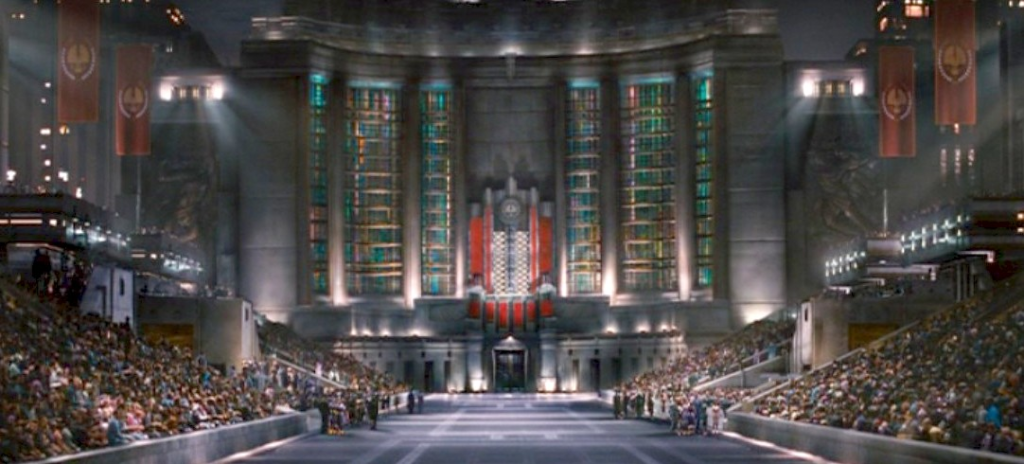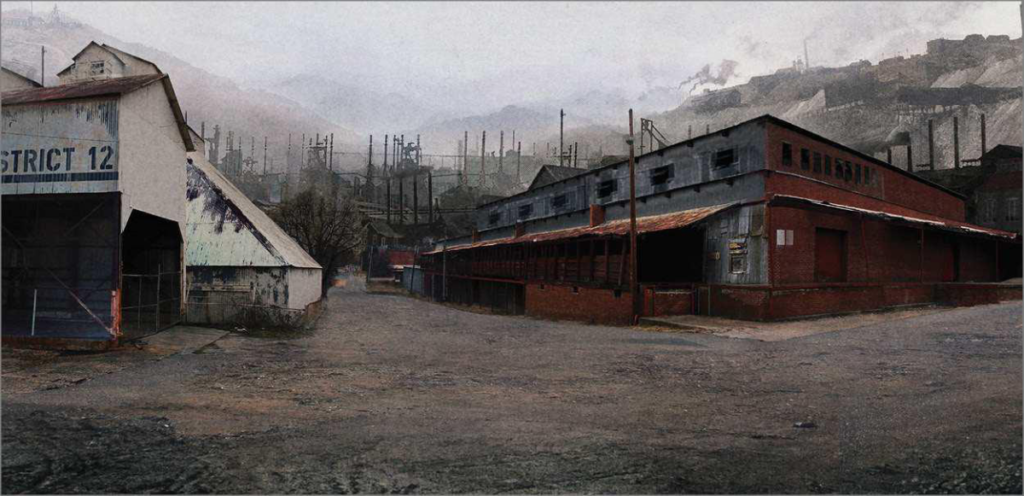In the Film “The Hunger Games”, both color and prop play a significant role in the narrative action of the film.
Color as Symbolism:
The color palette in “The Hunger Games” is a visual language that speaks volumes about the world depicted on screen. The Capitol is filled with bold and vibrant hues, symbolizing excess and superficiality. In contrast, the muted tones of the Districts convey a sense of struggle and resilience. Katniss Everdeen’s evolving costumes, from reluctant tribute to symbol of defiance, use color to narrate her journey.


Significance of the prop:
There are also several examples of props that are significant symbols in the film. Props in the film aren’t just set pieces; they are narrative devices that drive the story forward. The Mockingjay pin, a subtle yet powerful symbol of resistance, becomes Katniss’s ally. The Cornucopia, the central garden where weapons are housed for the tributes, acts as a central prop, as it not only represents survival but also intensifies the competitive nature of the Hunger Games. The Tracker Jacker nest, a deadly prop, adds an element of unpredictability, showcasing how props shape the tributes’ fate.

To conclude, “The Hunger Games” masterfully employs mis en scene, using color and props to convey emotions, amplify themes, and shape characters. The visual language created through these elements elevates the film, making it a captivating experience that lingers in the minds of viewers. In this dystopian world, the significance of color and props goes beyond aesthetics, playing a pivotal role in telling a compelling storyline.